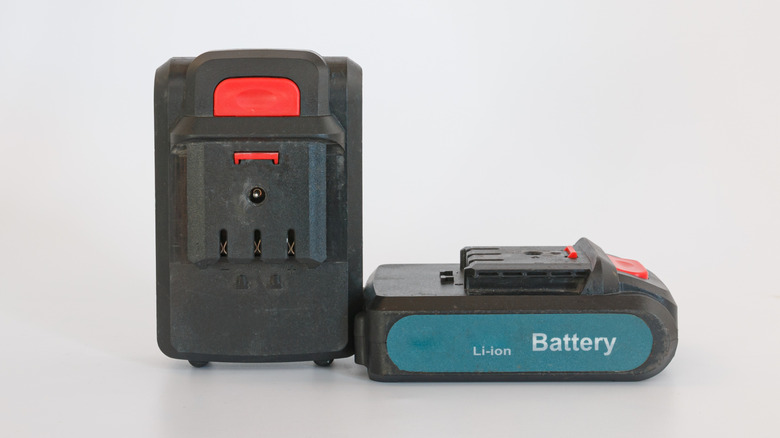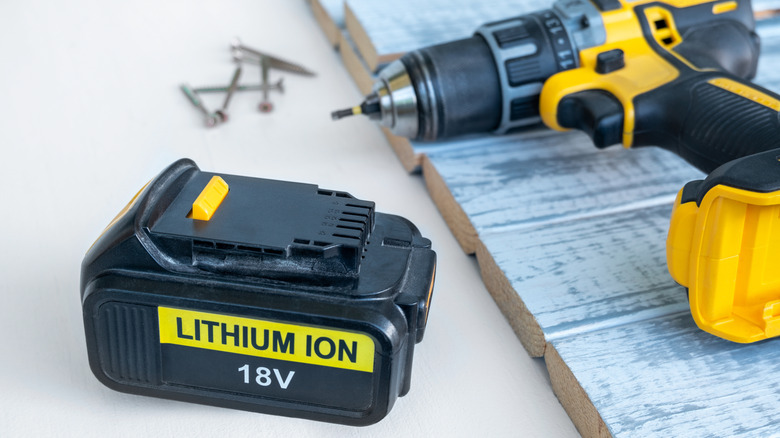Here's Why You Shouldn't Try To Revive A Power Tool Battery That Won't Hold A Charge
Battery-powered tools are incredibly common today. Most major tool brands have adopted this technology, exploring rechargeable battery science on their own to keep their tools running longer and more efficiently. With that said, power tool batteries haven't been perfected, as they are still prone to failure at some point. It's not uncommon for such a battery to lose its charge after several years of sustained use and recharging. Thus, one has to wonder: Is it possible, and should you attempt to revive your power tool batteries when they start to lose power?
To put it simply, lithium-ion batteries have a limited lifespan, so once they reach the end of their life, the best course of action is to replace them rather than attempting to repair or replace parts. The chemicals within lithium-ion batteries are incredibly volatile. If they're agitated in any way, like being exposed to heat or somehow damaged, leakage is likely to occur. From here, one could endure a host of adverse reactions, from fires to small explosions. This sudden and violent release of energy is known as thermal runaway, and once it starts a chemical fire, it's rather challenging to put out. Such fires are capable of sustaining themselves and require specific methods to put them out.
This is the most extreme aspect of a battery rehabilitation gone wrong. On a less risky level, there are other reasons why you should avoid trying such a tech surgery altogether.
Not only is it dangerous, but battery rehab is also complicated
Upon searching online, numerous tutorials are available that explain how to revive dying lithium-ion batteries. While these videos may make it seem like the process is a walk in the park that anyone could pull off, the truth is that it shouldn't be done — not only because it's dangerous, but also because it could get complicated. This complication arises from the technology inside modern power tool batteries. Many modern lithium-ion tool batteries come equipped with software to monitor battery health, temperature, cell balance, and more, which requires complex circuitry within the battery to pull off accurately.
Cracking open a dying battery can prove tricky as you navigate these elements, and you may not have the necessary know-how to connect the software to the repaired or replaced parts. As a result, the attached LEDs may not provide accurate readings, and you may find the battery's performance to be inconsistent in some way. Additionally, you may have to contend with malfunctions as the battery struggles to regulate itself. Even if you are confident in your reprogramming abilities, be aware that brands like Milwaukee consider battery tampering a sufficient reason to void the warranty. Thus, any potential for free repair or replacement could go out the window with a failed attempted repair.
At some point, power tool batteries simply have to be replaced. While repairing them yourself may seem tempting, at the end of the day, the risks far outweigh the rewards. Instead, be aware of the mistakes you could be making that are prematurely ruining your power tool batteries and avoid them at all costs.

